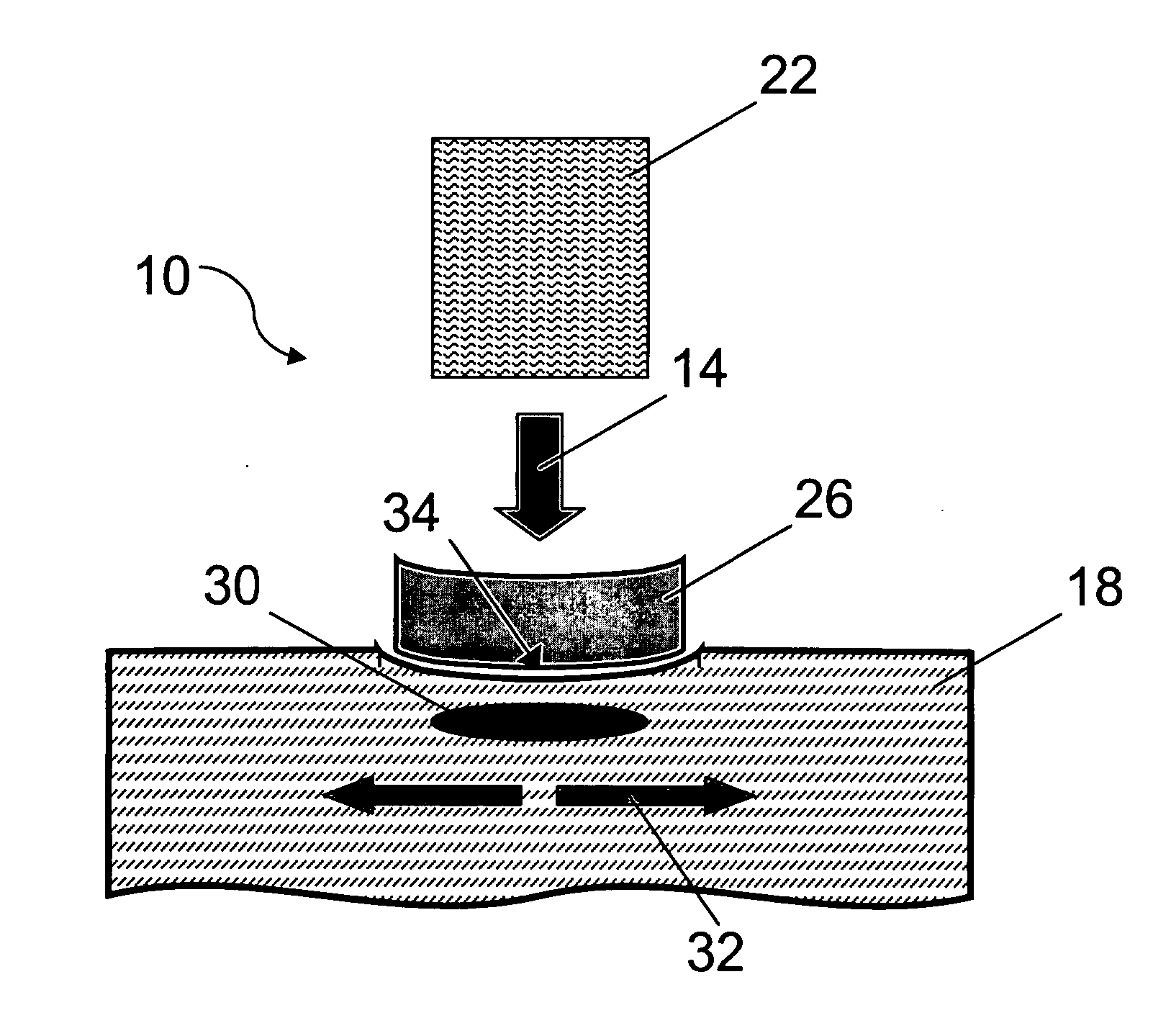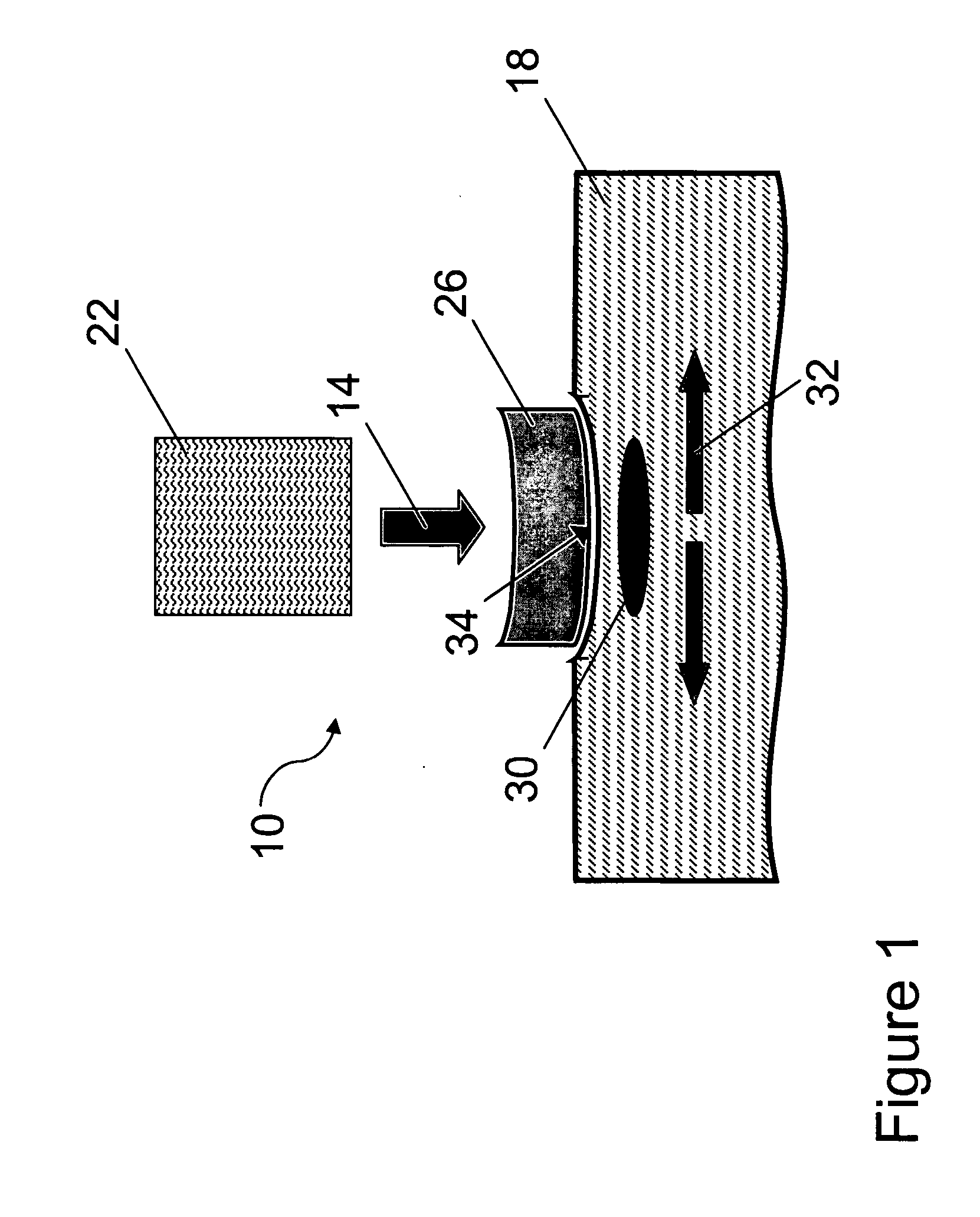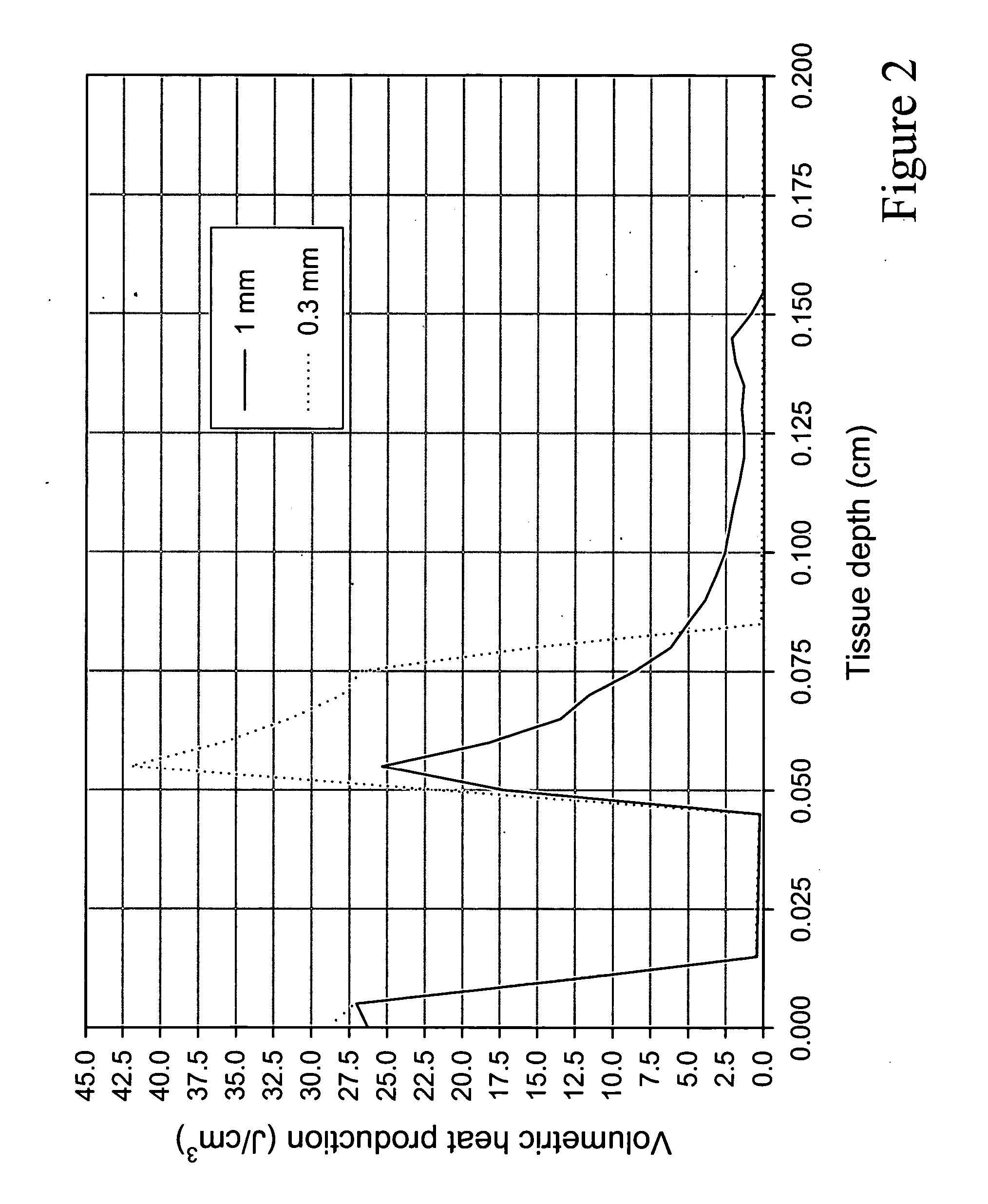Compression device for a laser handpiece
a laser and handpiece technology, applied in the field of compression devices for laser handpieces, can solve the problems of unfavorable patient safety, unfavorable patient safety, undesired purpura, etc., and achieve the effect of avoiding unwanted damage to tissue surrounding the target region and little or no injury to surrounding tissu
- Summary
- Abstract
- Description
- Claims
- Application Information
AI Technical Summary
Benefits of technology
Problems solved by technology
Method used
Image
Examples
Embodiment Construction
[0032]FIG. 1 shows an illustrative embodiment of an apparatus 10 delivering a beam of radiation 14 to a target region of skin 18. The apparatus includes a source 22 of the beam of radiation 14 and an optical element 26 for compressing the skin. The source 22 can generate the beam of radiation 14, or the source 22 can be a transmitter that delivers the beam of radiation to the target region of skin 18. For example, the transmitter can be an optical fiber or an optical waveguide. In other embodiments, the transmitter can include an articulated arm or an optical system that delivers a beam of radiation produced by a source through a system of lenses. Suitable optical elements 26 can include, but are not limited to, a lens and a plurality of lens. In the embodiment illustrated in FIG. 1, the optical element is a meniscus lens.
[0033] The target region of skin 18 can include a target feature 30, such as a pigmented lesion and / or a vascular lesion. In some embodiments, the beam of radiati...
PUM
 Login to View More
Login to View More Abstract
Description
Claims
Application Information
 Login to View More
Login to View More - R&D
- Intellectual Property
- Life Sciences
- Materials
- Tech Scout
- Unparalleled Data Quality
- Higher Quality Content
- 60% Fewer Hallucinations
Browse by: Latest US Patents, China's latest patents, Technical Efficacy Thesaurus, Application Domain, Technology Topic, Popular Technical Reports.
© 2025 PatSnap. All rights reserved.Legal|Privacy policy|Modern Slavery Act Transparency Statement|Sitemap|About US| Contact US: help@patsnap.com



